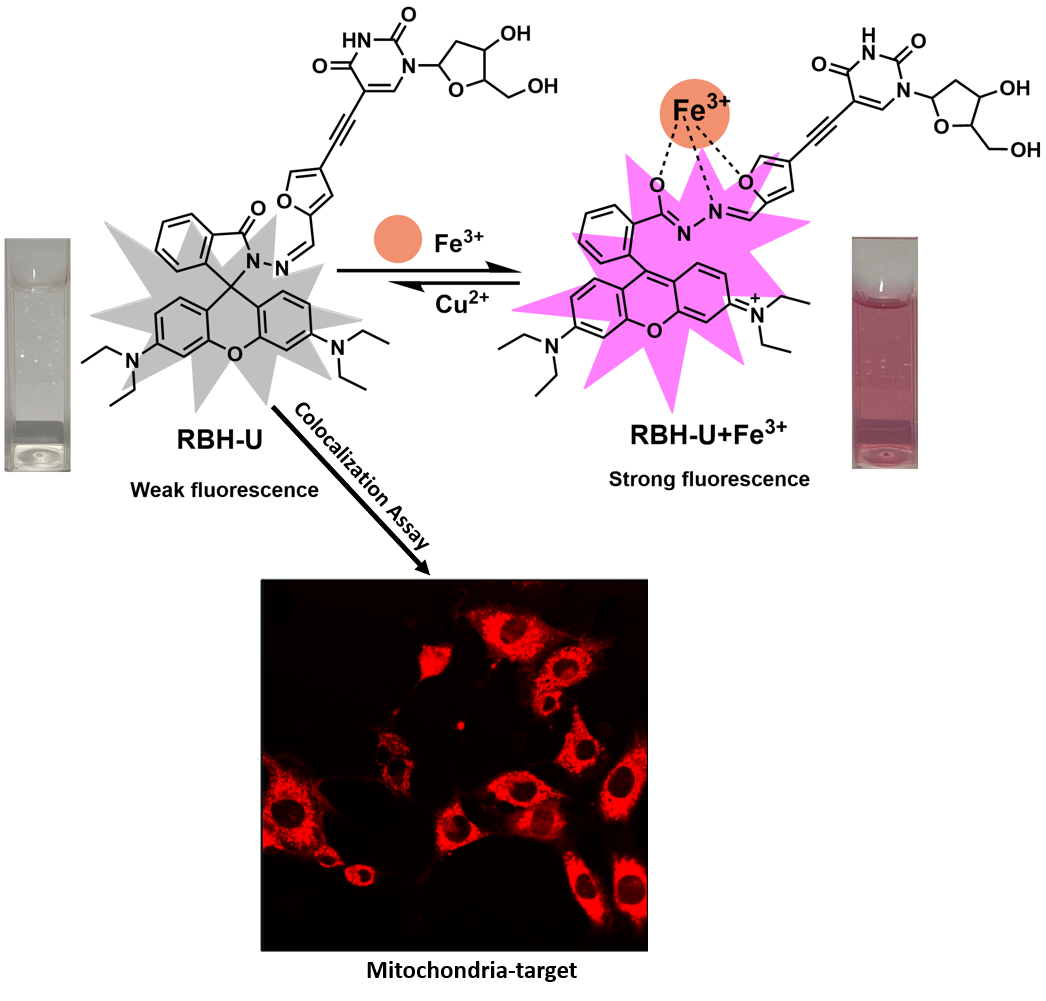Weiqing Xu, Farid Ahmed, and Hai Xiong*
Institute for Advanced Study, Shenzhen University, Shenzhen, 518060, P. R. China.
Email: hai.xiong@szu.edu.cn
A rhodamine hydrazide conjugating uridine moiety (RBH-U) is firstly synthesized by screening different synthetic routes, and then developed as a fluorescence probe for selective detection of Fe3+ ions in an aqueous solution, accompanied by visual color change with naked eyes. Upon the addition of Fe3+ in a 1:1 stoichiometry, a 9-fold enhancement in the fluorescence intensity of the RBH-U was observed with an emission wavelength of 580 nm. In the presence of other metal ions, the “turn-on” fluorescent probe with pH-independent (value 5.0 to 8.0) is remarkably specific for Fe3+ with a detection limit as low as 0.34µM. Further, the enhanced fluorescence intensity of RBH-U- Fe3+ can be quenched as a switch-off sensor to assist in the recognition of Cu2+ ions. Additionally, the colocalization assay demonstrated that RBH-U containing uridine residue can be used as a novel mitochondria-targeted fluorescent probe with rapid reaction time. Cytotoxicity and cell imaging of RBH-U probe in live NIH-3T3 cells suggest that it can be a potential candidate for clinical diagnosis and Fe3+ tracking toll for the biological system due to its biocompatibility and nontoxicity in NIH-3T3 cells even up to 100µM.

A multi-functional fluorescent probe based RBH-U can be performed in targeted mitochondrial, enhanced response for Fe3+ and assisted recognition of Cu2+ ion.


